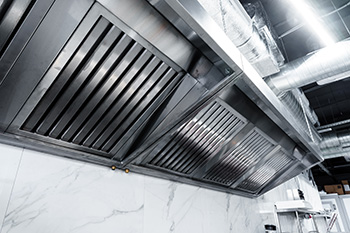Subscribe to our newsletter for timely content in your inbox

One of the most important pieces of equipment in a commercial kitchen is the exhaust hood system and its related automatic fire extinguishing system. Kitchen fires are a primary loss concern for cooking operations, especially when they include frying or other cooking methods that produce large amounts of grease-laden vapor. A properly designed and maintained exhaust hood allows the system to filter and trap these vapors to a controlled area for removal. This minimizes their travel and collection in unwanted areas where they can be fuel for a fire or increase the risk of a slip and fall injury.
A key part of proper exhaust hood maintenance is the routine removal and cleaning of the filters or traps based on the frequency of use. Because of their function, these components can be slick, and because of their location above cooking equipment they can be difficult and hazardous to reach and awkward to handle. Avoiding this task can compromise their effectiveness and increase the risk of a fire, while a poorly executed removal and replacement can lead to a serious injury. No need to feel trapped or baffled (bad puns intended), consider these basic safety precautions to help minimize the risk of injury.
With the proper scheduling, tools, work practices and PPE, the task of cleaning and inspecting grease filters can be done safely and comfortably from the floor. This will help ensure that the exhaust hood system functions while keep employees safe. For more information on kitchen safety and kitchen fire prevention, visit the restaurants industry section on our MyLossControlservices.com website.